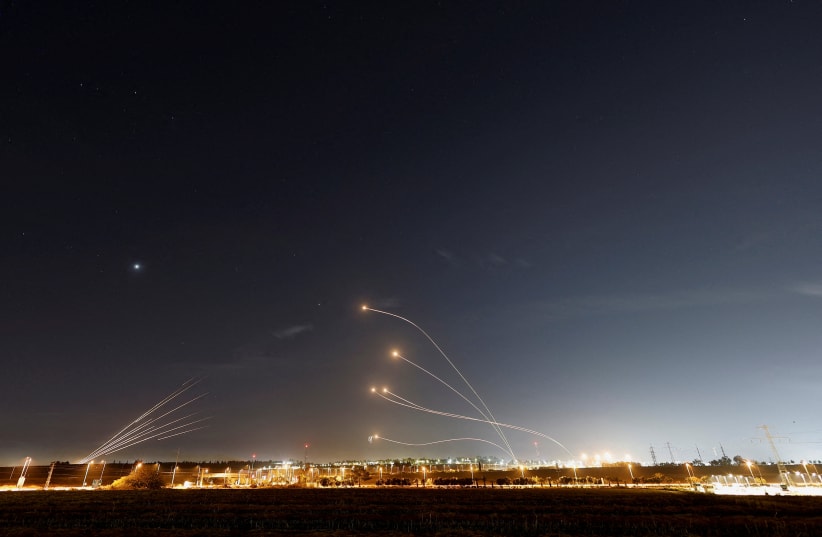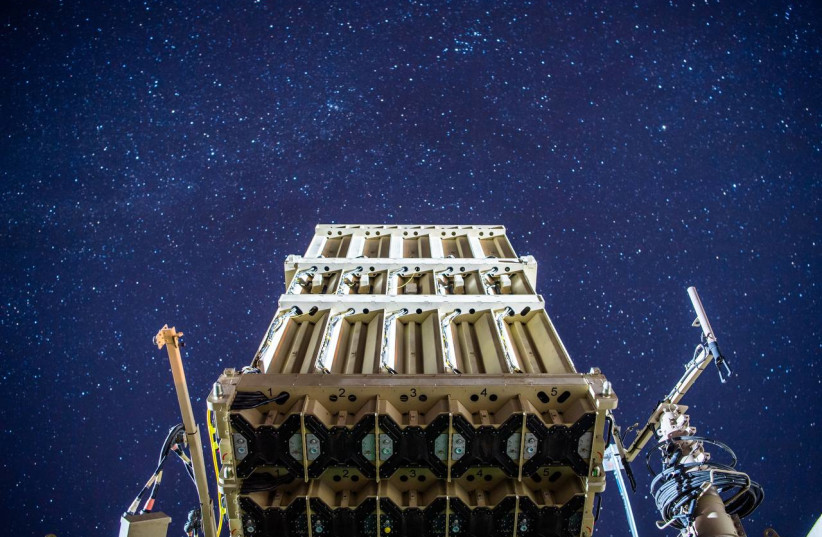Kyiv came under a massive air attack overnight on Monday, described by many as an unprecedented wave of missiles. The BBC quoted one official as saying it was “exceptional in density.”
One list of what was shot down claimed air defenders had downed six air-launched Kinzhal missiles, nine Kalibr cruise missiles, drones and Iskander missiles.
The massive attack on Ukraine is a timely reminder of the importance of air defense, that happens to come in the wake of Israeli air defenses defending against more than 1,000 missiles fired from Gaza. Israel’s relatively successful defense strategy shows the importance of multi-layered air defense.
The importance of multi-layered air defenses
Integrated multi-layered air defenses are increasingly key to defending countries and cities. Both Israel and Ukraine are now showing how these defenses can work in different arenas against different threats and scenarios. This means that, while Israel faces certain types of rockets based mostly on Iranian designs, Ukraine faces Russian missiles and Iranian drones.
The BBC noted that “the air raid alert sounded at around 02:30 local time (23:30 GMT Monday) and was lifted two hours later in the eighth attack to hit the capital [Kyiv] this month. An unusually high number of loud explosions was heard in the city center, as authorities told residents in online messages that air defense had been activated.”
Ukraine’s air defenses have improved over the last year and the country has become expert at confronting the types of threats Russia is throwing at Ukraine. This includes downing Iranian-made drones that Russia continues to try to acquire. It also includes stopping Russian missile threats. Ukraine now has the US-made Patriot system, a medium-range air defense system; as well as the German IRIS-T and Gepard air defenses.
Journalists covering Ukraine noted the long night of air defense activity. Euan MacDonald tweeted overnight, “air alert over entire Ukraine. Here in western Kyiv, there has just been a long, rolling sound like thunder, but lasting much longer. I saw several bright objects rising into the night sky from my window, and now several far-off explosions – air defenses at work.”
Journalist Oliver Carroll wrote that Kyiv military authorities had said there was a “nighttime attack involved cruise and likely ballistic missiles…the max number of missiles in the shortest time.”
FT Correspondent Christopher Miller noted “building-shaking explosions over central Kyiv. Ukraine’s air defense working hard. We’ve been under air raid alert for 45 minutes.”
The large volume of fire led some to suggest that the target of some of Russia’s attacks might have been the air defense systems themselves. It’s possible Russia wants to see how its missiles perform against an integrated defense that includes US and German-made systems.
As time goes on Ukraine’s systems improve and become more integrated and the learning curve accelerates, while it doesn’t appear time is on Moscow’s side in this regard. Russia doesn’t have new missiles or new drones apparently. All it can do is try new methods or using different types of missiles.
According to a recent article by the Associated Press, “The White House on Monday said Russia is looking to buy additional advanced attack drones from Iran for use in its war against Ukraine, after using up most of the 400 drones it had previously purchased from Tehran. The Biden administration last year publicized satellite imagery and intelligence findings that it said indicated Iran sold hundreds of attack drones to Russia. And for months, officials have said the United States believed Iran was considering selling hundreds of ballistic missiles to Russia, but Washington did not have evidence a deal was consummated.”
This illustrates how Russia is using Iranian drones increasingly and they are also mostly being shot down. The drones are used to terrorize civilians, much like Gaza-based Iranian-backed groups seek to terrorize Israel. As such the drones pose a regional and global threat; along with the missiles. It is also a threat that can be confronted. Ukraine now has the means to confront these threats.
In the past, there was some suggestion in media reports that the Iron Dome air defense system, which was built by Israel’s Rafael and whose interceptors are now built with Raytheon, could be requested by Ukraine.
The latest massive attack on Kyiv illustrates how Moscow apparently thinks it can try to overwhelm these systems by throwing different munitions at them, including the air-launched “hypersonic” Kinzhal missiles, and other types of missiles and drones. Previously, a Kinzhal launched by a Mig-31 was downed by a Patriot in early May.
Similarly, Iran has boasted of using different types of weapons against Israel, including drones, and also encouraging Palestinian Islamic Jihad to use the Badr and Buraq missiles that are based on Iranian designs, apparently. Iran’s media are also focused on Israel’s recent use of David’s Sling to down PIJ missiles during Operation Shield and Arrow.

